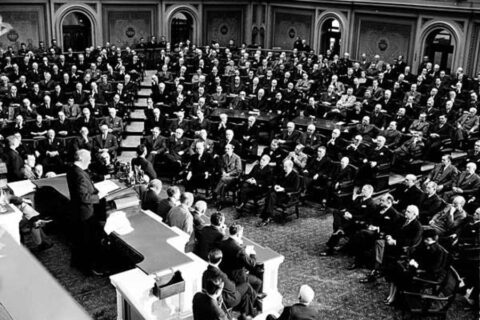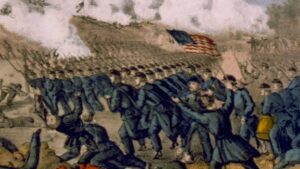
The Attack on Pearl Harbor in Two Documents
December 7th, 1941, marked the forced entry of the United States into World War II. Although the war in Europe had been going on since September 1939, and in East Asia from, arguably, since the Japanese invasion of China in 1937, it was the surprise attack on Pearl Harbor and other sites across the Pacific that brought war to America’s doorstep. Famously called “a date which will live in infamy” by President Franklin D. Roosevelt in his December 8th speech to Congress, the attack can be studied from a variety of perspectives and documents.
We offer here two documents worth considering for such a study: one widely known, one less-so.
The first is the lesser-known of the two, from Claude R. Wickard, the Secretary of Agriculture. In this excerpt from his diary, he recounts his experience meeting, along with other Cabinet officials, with President Roosevelt on the afternoon of December 7th, in which they were briefed on what had happened and what was still happening. Along with a summary of the president’s remarks, Wickard also records his own reflections and feelings, making this short document both useful to the student of history and interesting from the perspective of seeing a historic event through the eyes of an individual – and one who recognizes the moment for what it is.
The second document we recommend is FDR’s December 8th speech to Congress, in full. Although his opening statement is well know, FDR took time to explain in the rest of the speech what had happened, where, and gave some perspectives on what the United States government thought about the timing of the attack. This information helps to contextualize the attack regionally and globally, and put it alongside Japanese expansion efforts in East Asia, as well as their designs for their ‘Great East Asian Co-Prosperity Sphere.’
Taken together, these documents provide both personal and public reactions to the attack, and given their length are also highly accessible by students and general readers.



